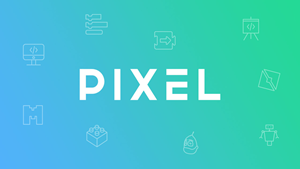Unlocking Creativity: How to Build Games for Kids Using Scratch and Roblox Studio
October 23, 2024, 4:12 am
In the digital age, creativity is the new currency. Children today are not just consumers of technology; they are creators. Two platforms stand out in this realm: Scratch and Roblox Studio. Both offer unique avenues for young minds to explore programming and game design. Let’s dive into how these platforms empower kids to bring their ideas to life.
Scratch is like a canvas for budding programmers. It’s a visual programming language that uses blocks to create animations and games. Imagine building a Lego structure, where each block represents a piece of code. Kids can easily grasp complex concepts through this hands-on approach.
Roblox Studio, on the other hand, is a playground for game developers. It allows users to create immersive worlds and experiences. Think of it as a vast universe where kids can design their own planets, complete with rules and adventures.
### Scratch: The Gateway to Programming
Scratch is perfect for younger children. It introduces them to the basics of coding without overwhelming them with syntax. The platform uses colorful blocks that snap together, making it intuitive.
For instance, creating a game like Geometry Dash in Scratch involves several steps. First, kids design their character. A simple cube can become a hero with a few clicks. They choose colors, add facial features, and group elements together. This process teaches them about design and functionality.
Next, they create backgrounds and obstacles. Here, imagination takes flight. A black rectangle can transform into a platform, while triangles become spikes. Each element teaches kids about spatial awareness and game mechanics.
The coding part is where the magic happens. Kids learn to program their characters to jump, dodge, and score points. It’s like teaching a puppet to dance. They set conditions and actions, watching their creations come alive.
Scratch also fosters collaboration. Children can share their projects, receive feedback, and learn from each other. This community aspect is crucial. It builds confidence and encourages experimentation.
### Roblox Studio: The Game Development Powerhouse
Roblox Studio caters to slightly older children and teens. It’s a robust platform that combines game design with social interaction. Here, kids can create entire games, complete with their own rules and environments.
Creating a game pass in Roblox is a popular project. It’s akin to crafting a ticket for an amusement park. Kids learn to navigate the interface, select templates, and customize their maps. The process starts with setting up a game environment. They can choose from existing templates or build from scratch.
Once the map is ready, it’s time to create the game pass. This step involves uploading images, writing descriptions, and setting prices. It’s a lesson in marketing and entrepreneurship. Kids learn to think about what makes their game unique and how to attract players.
Roblox also emphasizes monetization. Kids can sell their game passes for Robux, the platform’s currency. This introduces them to basic economic principles. They learn about supply and demand, pricing strategies, and the importance of value.
### The Educational Impact
Both Scratch and Roblox Studio serve as powerful educational tools. They teach coding, design, and critical thinking. More importantly, they foster creativity. Children learn to express themselves through technology, turning ideas into tangible projects.
Moreover, these platforms promote problem-solving skills. When a game doesn’t work as intended, kids must troubleshoot. They learn to analyze issues, test solutions, and iterate. This process mirrors real-world challenges, preparing them for future endeavors.
Collaboration is another key aspect. Both platforms encourage sharing and teamwork. Kids can work together on projects, combining their strengths. This builds communication skills and teaches them the value of diverse perspectives.
### Conclusion: A Future of Possibilities
In a world increasingly driven by technology, teaching kids to create is essential. Scratch and Roblox Studio are gateways to a future where creativity and coding go hand in hand. They empower children to think critically, solve problems, and express themselves.
As we look ahead, the skills learned on these platforms will be invaluable. The ability to code is no longer just a technical skill; it’s a form of literacy. It opens doors to careers in technology, design, and beyond.
Encouraging children to explore these platforms is like giving them a key to a treasure chest. Inside, they’ll find not just games, but the tools to shape their futures. So, let’s unlock that creativity and watch as the next generation of innovators takes flight.
Scratch is like a canvas for budding programmers. It’s a visual programming language that uses blocks to create animations and games. Imagine building a Lego structure, where each block represents a piece of code. Kids can easily grasp complex concepts through this hands-on approach.
Roblox Studio, on the other hand, is a playground for game developers. It allows users to create immersive worlds and experiences. Think of it as a vast universe where kids can design their own planets, complete with rules and adventures.
### Scratch: The Gateway to Programming
Scratch is perfect for younger children. It introduces them to the basics of coding without overwhelming them with syntax. The platform uses colorful blocks that snap together, making it intuitive.
For instance, creating a game like Geometry Dash in Scratch involves several steps. First, kids design their character. A simple cube can become a hero with a few clicks. They choose colors, add facial features, and group elements together. This process teaches them about design and functionality.
Next, they create backgrounds and obstacles. Here, imagination takes flight. A black rectangle can transform into a platform, while triangles become spikes. Each element teaches kids about spatial awareness and game mechanics.
The coding part is where the magic happens. Kids learn to program their characters to jump, dodge, and score points. It’s like teaching a puppet to dance. They set conditions and actions, watching their creations come alive.
Scratch also fosters collaboration. Children can share their projects, receive feedback, and learn from each other. This community aspect is crucial. It builds confidence and encourages experimentation.
### Roblox Studio: The Game Development Powerhouse
Roblox Studio caters to slightly older children and teens. It’s a robust platform that combines game design with social interaction. Here, kids can create entire games, complete with their own rules and environments.
Creating a game pass in Roblox is a popular project. It’s akin to crafting a ticket for an amusement park. Kids learn to navigate the interface, select templates, and customize their maps. The process starts with setting up a game environment. They can choose from existing templates or build from scratch.
Once the map is ready, it’s time to create the game pass. This step involves uploading images, writing descriptions, and setting prices. It’s a lesson in marketing and entrepreneurship. Kids learn to think about what makes their game unique and how to attract players.
Roblox also emphasizes monetization. Kids can sell their game passes for Robux, the platform’s currency. This introduces them to basic economic principles. They learn about supply and demand, pricing strategies, and the importance of value.
### The Educational Impact
Both Scratch and Roblox Studio serve as powerful educational tools. They teach coding, design, and critical thinking. More importantly, they foster creativity. Children learn to express themselves through technology, turning ideas into tangible projects.
Moreover, these platforms promote problem-solving skills. When a game doesn’t work as intended, kids must troubleshoot. They learn to analyze issues, test solutions, and iterate. This process mirrors real-world challenges, preparing them for future endeavors.
Collaboration is another key aspect. Both platforms encourage sharing and teamwork. Kids can work together on projects, combining their strengths. This builds communication skills and teaches them the value of diverse perspectives.
### Conclusion: A Future of Possibilities
In a world increasingly driven by technology, teaching kids to create is essential. Scratch and Roblox Studio are gateways to a future where creativity and coding go hand in hand. They empower children to think critically, solve problems, and express themselves.
As we look ahead, the skills learned on these platforms will be invaluable. The ability to code is no longer just a technical skill; it’s a form of literacy. It opens doors to careers in technology, design, and beyond.
Encouraging children to explore these platforms is like giving them a key to a treasure chest. Inside, they’ll find not just games, but the tools to shape their futures. So, let’s unlock that creativity and watch as the next generation of innovators takes flight.

